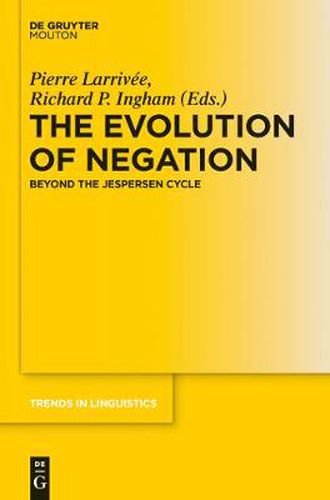Readings Newsletter
Become a Readings Member to make your shopping experience even easier.
Sign in or sign up for free!
You’re not far away from qualifying for FREE standard shipping within Australia
You’ve qualified for FREE standard shipping within Australia
The cart is loading…






This title is printed to order. This book may have been self-published. If so, we cannot guarantee the quality of the content. In the main most books will have gone through the editing process however some may not. We therefore suggest that you be aware of this before ordering this book. If in doubt check either the author or publisher’s details as we are unable to accept any returns unless they are faulty. Please contact us if you have any questions.
Why do grammars change? The cycle of negation proposed by Jespersen is crucially linked to the status of items and phrases. The definition of criteria establishing when a polarity item becomes a negative element, and the identification of the role of phrases for the evolution of negation are the two objectives pursued by the contributions to this volume.
The contributions look at the emergence of negative items, and their relation within a given sentence, with particular reference to English and French. The comparative perspective supports the documentation of the fine-grained steps that shed light on the factors that (i) determine change and those that (ii) accompany actuation, which are considered through a dialogue between functionalist and formalist approaches. By looking at the place of negation in the architecture of the sentence, they take up the debate as to the relevance of phrasal projections and consider the role of features. Focusing on the make-up of individual items makes it possible to re-conceptualise the Jespersen cycle as the apparent result of the documented evolution patterns of individual (series of) items. This novel perspective is solidly grounded on an extensive use of the complete, up to date bibliography, and will contribute to shape future research.
$9.00 standard shipping within Australia
FREE standard shipping within Australia for orders over $100.00
Express & International shipping calculated at checkout
This title is printed to order. This book may have been self-published. If so, we cannot guarantee the quality of the content. In the main most books will have gone through the editing process however some may not. We therefore suggest that you be aware of this before ordering this book. If in doubt check either the author or publisher’s details as we are unable to accept any returns unless they are faulty. Please contact us if you have any questions.
Why do grammars change? The cycle of negation proposed by Jespersen is crucially linked to the status of items and phrases. The definition of criteria establishing when a polarity item becomes a negative element, and the identification of the role of phrases for the evolution of negation are the two objectives pursued by the contributions to this volume.
The contributions look at the emergence of negative items, and their relation within a given sentence, with particular reference to English and French. The comparative perspective supports the documentation of the fine-grained steps that shed light on the factors that (i) determine change and those that (ii) accompany actuation, which are considered through a dialogue between functionalist and formalist approaches. By looking at the place of negation in the architecture of the sentence, they take up the debate as to the relevance of phrasal projections and consider the role of features. Focusing on the make-up of individual items makes it possible to re-conceptualise the Jespersen cycle as the apparent result of the documented evolution patterns of individual (series of) items. This novel perspective is solidly grounded on an extensive use of the complete, up to date bibliography, and will contribute to shape future research.